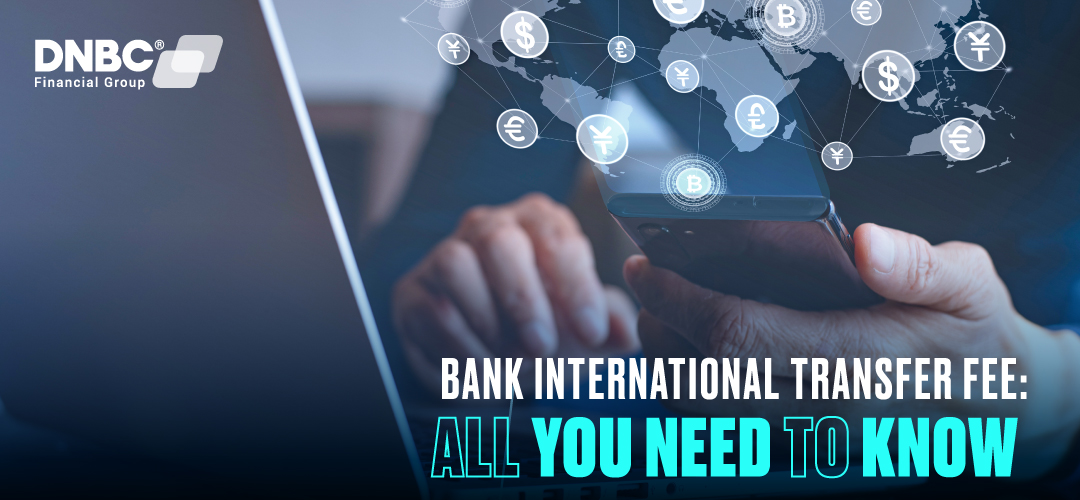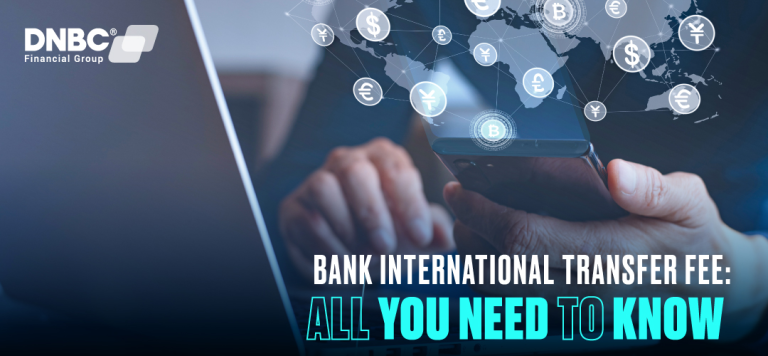Money is transferred abroad for a variety of reasons, whether it’s for business or personal purposes. Nevertheless, unlike a domestic bank remittance, this transaction isn’t accessible to the customer. In this article, our DNBC Financial Group’s experts will help you shed light on why bank international transfer fees are levied and what factors determine the cost.

Bank international transfer fee: All you need to know
What is the bank international transfer fee?
International bank transfers typically involve many intermediary banks (from point A to point B, or even from point A to point B to C to D), so they are rarely simple. And a number of procedures are required to be completed in order for the money to arrive safely. As a result, banks and other payment providers are expected to impose charges on clients making international payments. This includes fees for processing payments, foreign exchange, bank deductions, and other expenses. In addition to the sender paying for these charges, the beneficiary recipient frequently needs to pay a fee for receiving the money from abroad.
Financial institutions may charge different amounts for sending and receiving wire transfers, and this can vary from one institution to the other.
What constitutes the cost of the bank international transfer fee?
Foreign exchange rates
Foreign exchange conversion accounts for a significant portion of an overseas bank transfer fee. This will differ from the interbank exchange rate because individual banks and money transfer services use different rates to profit when buying and selling currencies. In fact, the customer is paying a currency conversion cost on top of the interbank rate – either a fixed fee or a percentage of the total amount received. The amount that the sender pays and the recipient receives will depend on the exchange rate at the time of the transaction.
If you are looking for a trusted money transfer company offering the best conversion rate, DNBC Financial Group may be an ideal option to choose. Our platform allows customers to make overseas payment transactions conveniently and cost-effectively. Up to 170 countries and territories around the world, you can send and receive the money within 1-5 business days or immediately, depending on the type of transaction.
Additional fees
There may be additional discretionary costs such as bank overheads and other processing fees that are rarely disclosed to customers.
At DNBC Financial Group, we always make all information about our fees public to customers. Therefore, customers don’t need to worry about any unexpected costs when making transactions through our smart digital banking platform.
SWIFT fees
Most international money transfers are processed through the SWIFT network, which entails additional fees for both senders and recipients. Large banks may impose transfer and recipient fees for SWIFT wire transfers as well as a SWIFT tracing cost for customers who want to track the status of the transaction.
What factors will affect the cost of bank international transfer fee
Time and speed of transaction
The time of the transfer plays an important role to save costs when making international payments. As previously mentioned, depending on when the sender completes the transaction, the foreign currency rate can vary (go up or down). The sooner the beneficiary requires the funds the higher cost of international bank transfers is.
Currencies and countries involved
The currencies involved should also be taken into account because rates will differ based on which currency pair is being processed.
Sending money to some places is also more expensive than sending money to other places, especially to nations with outdated banking systems and financial technologies.
Next, because the demand for sending and receiving money from the U.S. is very tremendously high, so we will learn more about U.S. bank wire transfer fees.
The U.S. imported $3.4 trillion worth of goods and services from overseas in 2021, making it the greatest importer in the world. The U.S. exported manufactured items worth $2.2 trillion around the world during the same time. Therefore, it is reasonable why the number of searches for U.S. bank wire transfer fees increased.
How much does U.S. Bank charge for international transfers?
The charge varies according to the destination country, the type of account you are using, and the transfer’s terms and conditions. Be sure to double-check the information for your specific nation before completing the transfer.
U.S. Bank exchange rates
As we mentioned above, if many banks are involved, the expenses will be higher. Intermediary banks often utilize marked-up exchange rates rather than the mid-market rate.
About DNBC Financial Group
DNBC Financial Group is the world’s top digital payment company. Since 2017, DNBC has been setting the standard for innovation in the money transfer platform, providing solutions for every step of payment collection, fund transfer, and cash flow management.
Or please contact DNBC
![]() Email: [email protected]
Email: [email protected]
![]() Phone Number:
Phone Number:
- +65 6572 8885 (Office)
- +1 604 227 7007 (Hotline Canada)
- +65 8442 3474 (WhatsApp)



 DNBC Team
DNBC Team